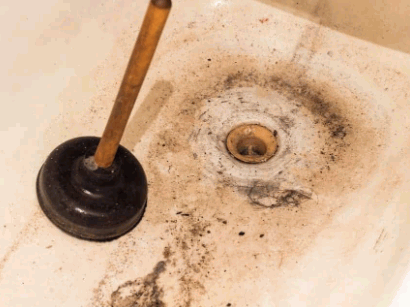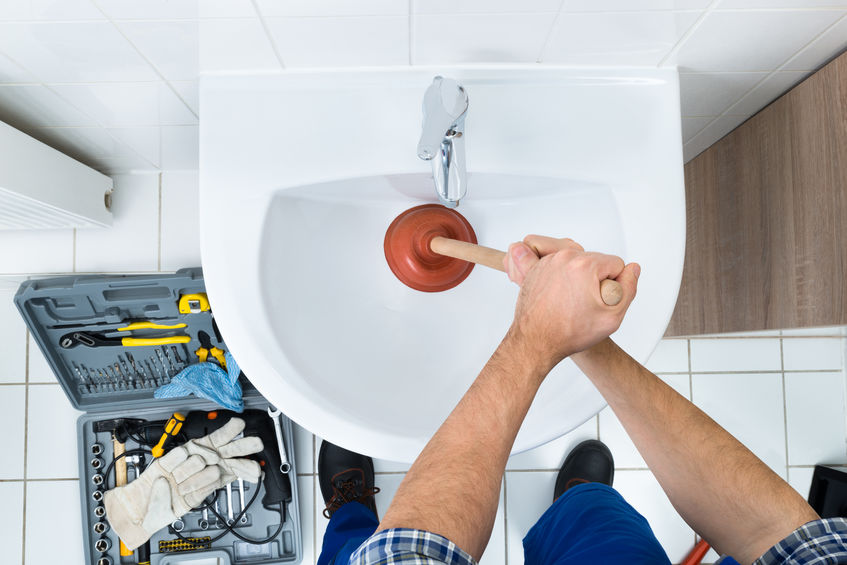Successful Plunger and Drain Cleaner Utilization: Key Advice
Successful Plunger and Drain Cleaner Utilization: Key Advice
Blog Article
What're your beliefs on Here's How to Correctly Use a Toilet Plunger?

Intro
Appropriate maintenance of family drains is essential for protecting against blockages and guaranteeing smooth water flow. Among the secret tools in every home owner's toolkit is the plunger, alongside different drain cleansers developed to tackle persistent clogs successfully. This short article discovers how to use plungers and drainpipe cleansers effectively to keep your drains pipes streaming easily.
Section 1: Recognizing Plungers
Sorts of Plungers
There are numerous sorts of bettors offered, each developed for different sorts of drains pipes and blocks. The most usual types include mug plungers, flange bettors, and accordion bettors.
How Plungers Job
Plungers work on the concept of creating stress and suction to dislodge obstructions. When appropriately used over a drain, they develop a vacuum that can take out debris or break up blockages.
Choosing the Right Bettor
Picking the appropriate bettor depends upon the kind of drainpipe and the nature of the blockage. Cup plungers are perfect for sinks and tubs, while flange bettors are much better fit for toilets due to their design.
Usual Errors with Plungers
Staying clear of these blunders makes sure effective plunging: inappropriate seal around the drain, insufficient pressure, and not clearing bordering debris.
Area 2: Utilizing Plungers Effectively
Prep work
Before diving, ensure the bettor covers the drainpipe totally and creates a limited seal. Clear any noticeable particles around the drain opening.
Strategy
Begin with mild plunging movements to build suction. Boost stress progressively, using a stable rhythm. Repeat as necessary until the drainpipe removes.
Troubleshooting Tips
If diving doesn't function, try readjusting the seal, applying oil jelly for a better seal, or making use of a different kind of bettor.
Section 3: Comprehending Drainpipe Cleaners
Sorts Of Drainpipe Cleaners
Drain cleansers can be chemical or chemical. Chemical cleaners utilize solid chemicals to liquify obstructions, while enzymatic cleaners use natural enzymes to break down raw material.
Just How Drainpipe Cleaning Company Job
Chemical cleansers respond with obstructions to liquify them, while chemical cleansers break down natural products like hair and oil without harming pipelines.
Security Considerations
Constantly use gloves and eye defense when using chemical drainpipe cleaners. Make certain appropriate ventilation and adhere to producer guidelines meticulously.
Eco-Friendly Alternatives
Think about using vinegar and cooking soft drink or enzyme-based cleaners for eco-friendly choices that are much safer for pipelines and the atmosphere.
Area 4: Utilizing Drain Cleaning Company Efficiently
Application Strategies
Put chemical cleansers straight into the drain opening. Permit them to benefit the suggested time before flushing with warm water. Chemical cleaners should rest overnight.
Safety measures
Avoid blending different types of cleansers, as this can produce poisonous fumes. Never use chemical cleansers along with a bettor, as splashing can take place.
Dealing With Persistent Blockages
For relentless obstructions, consider making use of a plumbing snake or calling a specialist plumbing to avoid damages to pipes.
Final thought
Finally, understanding exactly how to utilize bettors and drain cleaners efficiently is crucial for maintaining healthy plumbing systems. By selecting the right tools and methods, house owners can take on small obstructions and prevent significant pipes problems down the line.
4 DIY Ways to Unclog Drains
Wire Hanger
This age-old technique has been used by many an amateur plumber – to much success. Take any wire hanger, deconstruct its shape and leave a small hook shape on the end. Time to go fishing! Remove the shower or sink drain cover and snake the wire into the drain, wiggling and rotating it as you push it through. Dispose of the gunk that you remove and flush the drain with hot water. Rinse with a pan of boiling water for best results.
Plunger
Creating a suction in your drain can break up clogs caused by hair and soap residue build up. First, make sure you are using the correct type of plunger, one specifically for sinks or tubs. They are typically smaller than regular toilet plungers and often have a shallow suction cup. Regular plungers can work too but we’d recommend cleaning them first and finding a way to create better suction over the drain.
Baking Soda and Vinegar
This technique is a classic – and one of the most popular DIY drain unclog methods. Pour one cup of baking soda and one cup of vinegar down the drain and allow it to work its magic overnight. The next morning, flush the drain with boiling water. Repeat if necessary.
Drain Snake/Hair Clog Tool
If you know your clog is caused primary by hair, a drain snake/hair clog tool might be your best option. These tools can be purchased for under $10 at any hardware store and work well so long as the clog isn’t too deep in the drain.
https://www.callcatons.com/blog/four-diy-ways-to-unclog-drains/

Application Strategies
Put chemical cleansers straight into the drain opening. Permit them to benefit the suggested time before flushing with warm water. Chemical cleaners should rest overnight.
Safety measures
Avoid blending different types of cleansers, as this can produce poisonous fumes. Never use chemical cleansers along with a bettor, as splashing can take place.
Dealing With Persistent Blockages
For relentless obstructions, consider making use of a plumbing snake or calling a specialist plumbing to avoid damages to pipes.
Final thought
Finally, understanding exactly how to utilize bettors and drain cleaners efficiently is crucial for maintaining healthy plumbing systems. By selecting the right tools and methods, house owners can take on small obstructions and prevent significant pipes problems down the line.
4 DIY Ways to Unclog Drains
Wire Hanger
This age-old technique has been used by many an amateur plumber – to much success. Take any wire hanger, deconstruct its shape and leave a small hook shape on the end. Time to go fishing! Remove the shower or sink drain cover and snake the wire into the drain, wiggling and rotating it as you push it through. Dispose of the gunk that you remove and flush the drain with hot water. Rinse with a pan of boiling water for best results.
Plunger
Creating a suction in your drain can break up clogs caused by hair and soap residue build up. First, make sure you are using the correct type of plunger, one specifically for sinks or tubs. They are typically smaller than regular toilet plungers and often have a shallow suction cup. Regular plungers can work too but we’d recommend cleaning them first and finding a way to create better suction over the drain.
Baking Soda and Vinegar
This technique is a classic – and one of the most popular DIY drain unclog methods. Pour one cup of baking soda and one cup of vinegar down the drain and allow it to work its magic overnight. The next morning, flush the drain with boiling water. Repeat if necessary.
Drain Snake/Hair Clog Tool
If you know your clog is caused primary by hair, a drain snake/hair clog tool might be your best option. These tools can be purchased for under $10 at any hardware store and work well so long as the clog isn’t too deep in the drain.
https://www.callcatons.com/blog/four-diy-ways-to-unclog-drains/

I'm just very focused on Tips on How to Effectively Use a Plunger and I'm hoping you appreciated our article. Those who enjoyed our post if you please do not forget to pass it around. Thanks for being here. Return soon.
Request An Estimate Report this page